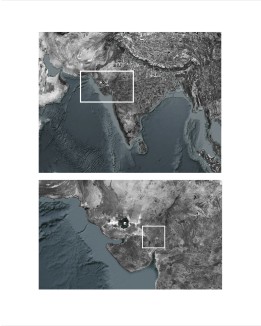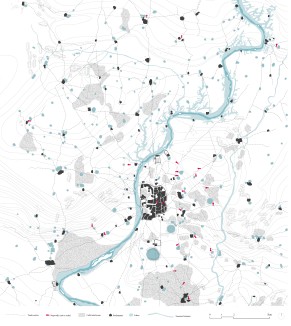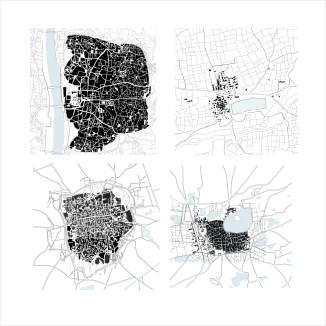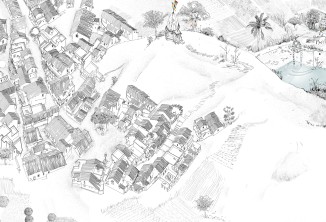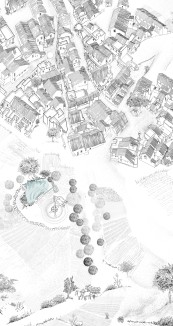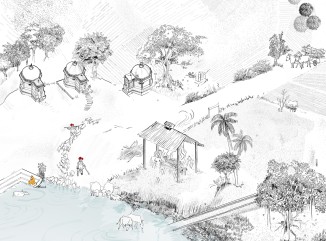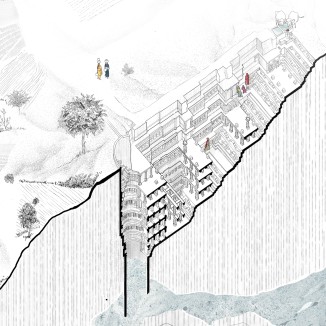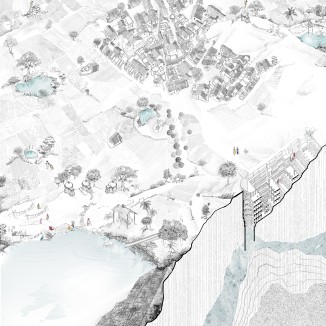Regional Patterns of Water & Settlements
The state of Gujarat in western India (top) and the semi-arid region of north central Gujarat (bottom). The region is bordered by the rugged Aravalli hills to the northeast, the Thar Desert to the west, and the Arabian sea to the south.
North central Gujarat’s settlement pattern along the seasonal rivers and streams traversing its gently undulating alluvial plains. During the monsoons, rainfall and floodwaters were harnessed for growing crops.
Map of the historic walled city of Ahmedabad and its hinterland settlements relative to seasonal watercourses, reservoirs, and stepwells. A consistent pattern in the relationships between settlements, terrain, surface water, and groundwater emerged throughout north central Gujarat.
Maps of historic settlements relative to bodies of surface water. Meta village (top right), Vadnagar (bottom right), Patan (bottom left) and Ahmedabad (top left).
Dwellings in a small settlement built on dry, higher ground (tekro) with a sacred shrine marking the settlement’s highest point.
Streets aligned with natural drainage lines, marking the movement of people and water across the landscape.
Small reservoirs of water (talav) form in natural or man-made depressions in the terrain. In the dry months after the monsoon, such reservoirs situated at the edge of settlements were used for agriculture and other functions.
People gathering at the banks of the reservoir to wash and dye clothes.
Livestock bathing and rearing, and funerary cremation rituals taking place on the banks of the reservoir. The domain of stagnant surface water was often associated with the shrines of particular deities, gods, and goddesses that were symbolically kept outside the settlement.
A reservoir recharges the groundwater which is then extracted from a simple open well (kuo) situated nearby. Water filtered by layers of earth and drawn from wells and stepwells was privileged as a source for drinking.
Women fetching water from a stepwell that taps into a groundwater aquifer. It consists of a large well shaft and a long, subterranean stepped corridor which doubles as a rainwater cistern. The stepwell also served as a meeting and resting space for locals and travelers.
Together, the reservoir, wells, and the stepwell bind the settlement to the surface and depth of the earth. A holistic working knowledge of the terrain, surface water, and groundwater enabled settlements to thrive in the region’s challenging semi-arid climate.

